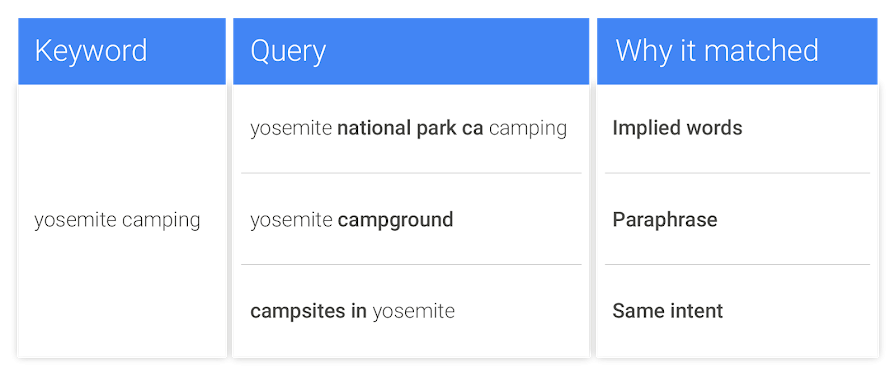Google Ads is constantly updating and changing the way it works, which means that if you’re working in marketing, you need to keep up to date. While some strategies remain successful, others fail to stand the test of time as Google continues to use AI to improve its products.
Change is inevitable and Google claims that people are changing the way they use search so marketers need to adapt or see their performance plummet. One example of a change that caused a shift in PPC strategy is the move from SKAGs (Single Keyword Ad Groups) to STAGs (Single Theme Ad Groups).
What are Single Theme Ad Groups?
As the name suggests, STAGs are ad groups containing keywords grouped together by a specific theme. They became more effective than SKAGs, or Single Keyword Ad Groups, as Google Ads changed its definition of close variants.
What happened to SKAGs (Single Keyword Ad Groups)?
Single keyword ad groups (often referred to as “SKAGs”) are one of the areas that were most impacted by Google’s changes to close variants. Single keyword ad groups have one keyword per ad group. They tend to fall under one of the following brackets:
- Single ad group per campaign with a micro-budget or shared budgets
- All ad groups in one campaign with a giant budget
- Varied numbers of ad groups per campaign with budgets set in relation to the products or services that had been listed
This allowed marketers to feel more in control of their budgets and allowed them to improve their Quality Score and lower the CPC. However, budgets could easily become misallocated as all ads could easily end up placed into the same campaign.
What are close variants?
Close variants were introduced in 2014 to bypass spelling mistakes and pluralised keywords. This nullified the effectiveness of SKAGs as there wasn’t a need for them to cover specific typos or plural versions.
Then Google Ads included exact match and keyword match types which all but ended the reign of SKAGs for good. Implied matches became allowed, meaning that things like “cutting hair” would match with things like “trimming hair”. Where people used to invest in exact matches to target exact phrases, this was no longer an option.
It also began to become difficult to include all the negative keywords required to eliminate unnecessary traffic and reduce click costs that wouldn’t convert to sales. Google had placed a limit of 10,000 negatives for each search campaign and it would be difficult to list all negatives for implied matches as well as exact matches.
The solution to this was introduced with single theme ad groups or STAGs. These Google Ads groups focus on themes rather than syntax. It is now necessary for there to be three to five similar themed keywords per ad group.
How to structure a Single Theme Ad Group
There are a few different ways you can structure a STAG but here are two:
- The first format is using the service or product category as the campaign. Here, audience and messaging will govern the ad group. Keyword research is also key.
- Your second option is to use location or market as the campaign. These ad groups will revolve around products and services. A final option is to use profit probability as your campaign. Here, the ad groups will be corresponding products or services.

Benefits of STAGs
The main benefit of STAGs is that you can budget more effectively. Rather than having to allow a budget for every search term or variant possible, you can choose exactly where you want to place your budget, which allows for budgeting to be targeted around profitability.
Other benefits include:
- Better Quality Score – better ad groups lead to better CTRs, which improves your Quality Score.
- Better organisation – Having hundreds of SKAGs can be a nightmare to manage. But by grouping keywords into STAGs, it becomes easier to add, remove, and alter keywords.
- Better ad copy – Because of the specificity of STAGs, your ad copy will mirror this and increase your chances of clicks, which leads to the better Quality Score benefit
STAGs really are beneficial for ROAS, impression share and conversion rates, as opposed to simply playing into the hands of PPC professionals.
How to create STAGs
The process is simple. As an example, say we have a company that sells t-shirts.
- Conduct keyword research and compile a list of keywords that fits with your product, service, or brand. Don’t think about pruning the list just yet.
- Once you’ve got your list, now you can fine-tune it. Remove any overlapping terms and think about themes and sub-themes – the more specific, the better. We might consider themes such as “men’s t-shirts”, “women’s t-shirts”, “children’s t-shirts”, “unisex t-shirts”, and “vegan-friendly t-shirts”.
- Now think about the keywords that would fit into those groups. You could add different colour variants or sleeve lengths (or maybe even have sleeve lengths as a theme/sub-theme).
- Think about the ad copy you want to write for each variation. This can be done dynamically. Here are some examples for “children’s t-shirts”:
- “Ready for the summer? Check out our cool yellow children’s t-shirts.”
- “Ready for the summer? Check out our cool blue children’s t-shirts.”
- “Ready for the summer? Check out our cool green children’s t-shirts.”
Alternatively, you could do it the other way around and centre the colour as a theme and use types as the variations, like so:
- “Ready for the summer? Check out our cool yellow children’s t-shirts.”
- “Ready for the summer? Check out our cool yellow men’s t-shirts.”
- “Ready for the summer? Check out our cool yellow vegan-friendly t-shirts.”
There are so many possibilities with STAGs, which can make management overwhelming. If you need a platform to help you organise and manage your ads and your copy, you can always try Adzooma.
With its use of machine learning to give effective suggestions from its Opportunity Engine, you can boost your impressions for each STAG, improve CTR, and, ultimately, increase sales. To find out more about how much time and money you could save with Adzooma, take a look at our Features and Pricing pages.
Conclusion
STAGs just make sense. They follow Google Ads recommendations of adding up to 20 keywords in an ad group and keep your keywords organised with hyper-focused themes. That, in turn, improve every aspect of your ads, from copy to click.
Making the shift from SKAGs to STAGs can be a little intimidating. After all, we all tend to like to stick to what we know. But when you work in any area of marketing, it’s important to keep moving forward with the times and to use the tools available to you to the best of your ability. This means being flexible and adapting. Embrace this opportunity to work with STAGs, which will help to significantly drive profits.
SKAGs aren’t totally obsolete but the benefits of STAGs vastly outweigh them.




